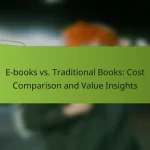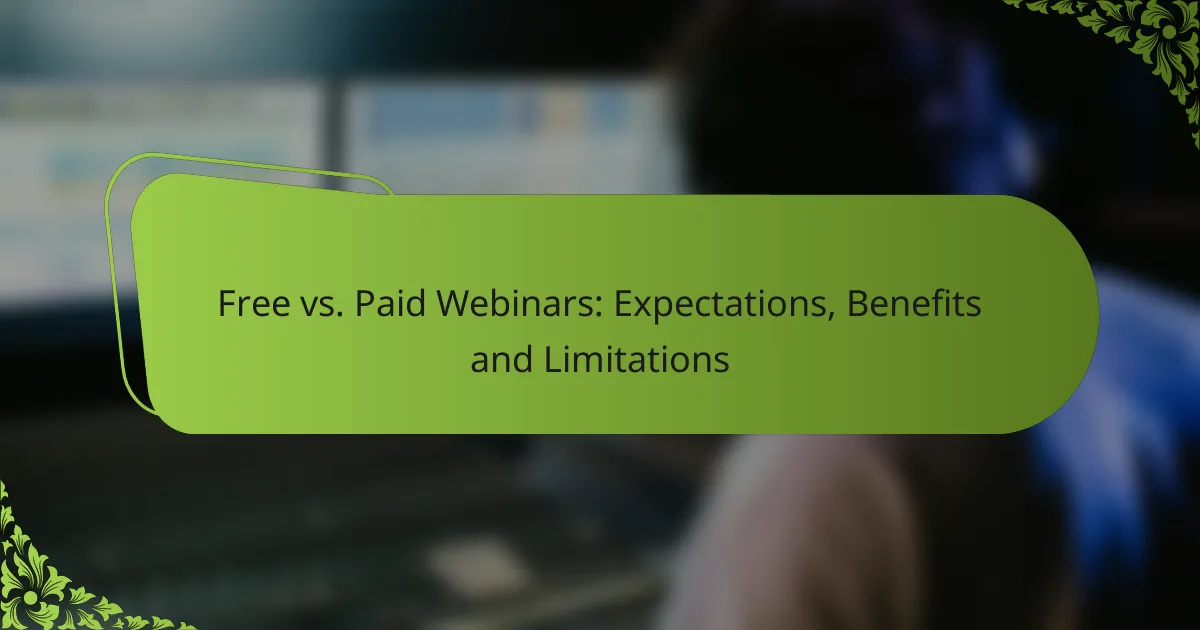When considering webinars, the choice between free and paid options can significantly impact the experience and outcomes for participants. Free webinars provide accessible content and can reach a broader audience, but often lack the depth and engagement found in paid sessions. In contrast, paid webinars typically offer a more professional experience, featuring structured content and exclusive insights, making them a valuable investment for those seeking in-depth knowledge and interaction.
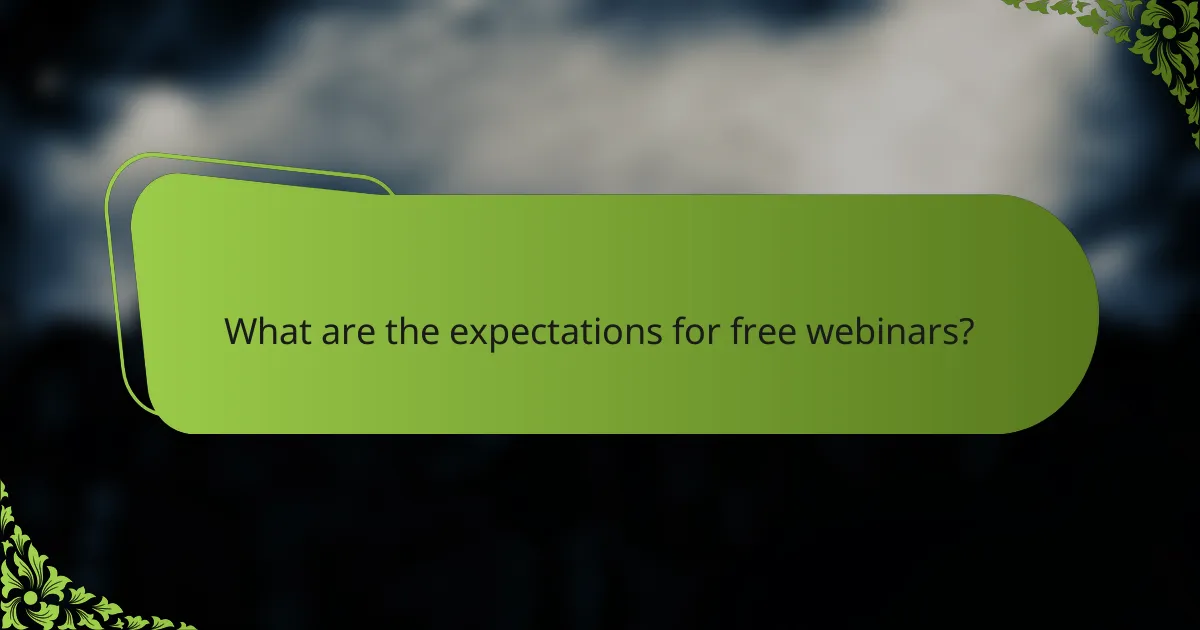
What are the expectations for free webinars?
Free webinars typically offer accessible content but come with limitations in engagement and depth. Participants can expect basic information delivery with less interaction compared to paid options.
Limited engagement opportunities
Free webinars often restrict participant interaction, which can hinder meaningful discussions. Attendees may have limited chances to ask questions or engage with the presenter, leading to a less personalized experience.
For instance, many free webinars utilize chat functions that are monitored but not interactive, meaning questions may not be addressed in real-time. This can leave participants feeling disconnected from the content.
Basic content delivery
Content in free webinars is usually introductory and lacks in-depth analysis. Presenters may focus on broad topics rather than specialized knowledge, which can limit the value for attendees seeking advanced insights.
Free sessions often serve as overviews or promotional tools rather than comprehensive learning experiences. Participants should be prepared for surface-level information rather than detailed exploration.
Wider audience reach
One significant advantage of free webinars is their ability to attract a larger audience. Without a financial barrier, more individuals can join, which can enhance networking opportunities.
This broader reach can be beneficial for presenters looking to build their brand or promote a product, as they can connect with diverse participants from various backgrounds and locations.
Lower perceived value
Free webinars often carry a lower perceived value compared to paid ones. Attendees may assume that if no cost is involved, the quality of content and expertise may be lacking.
This perception can affect engagement levels, as participants might not invest as much attention or effort into a free session. Presenters should strive to deliver high-quality content to counteract this bias and enhance the overall experience.
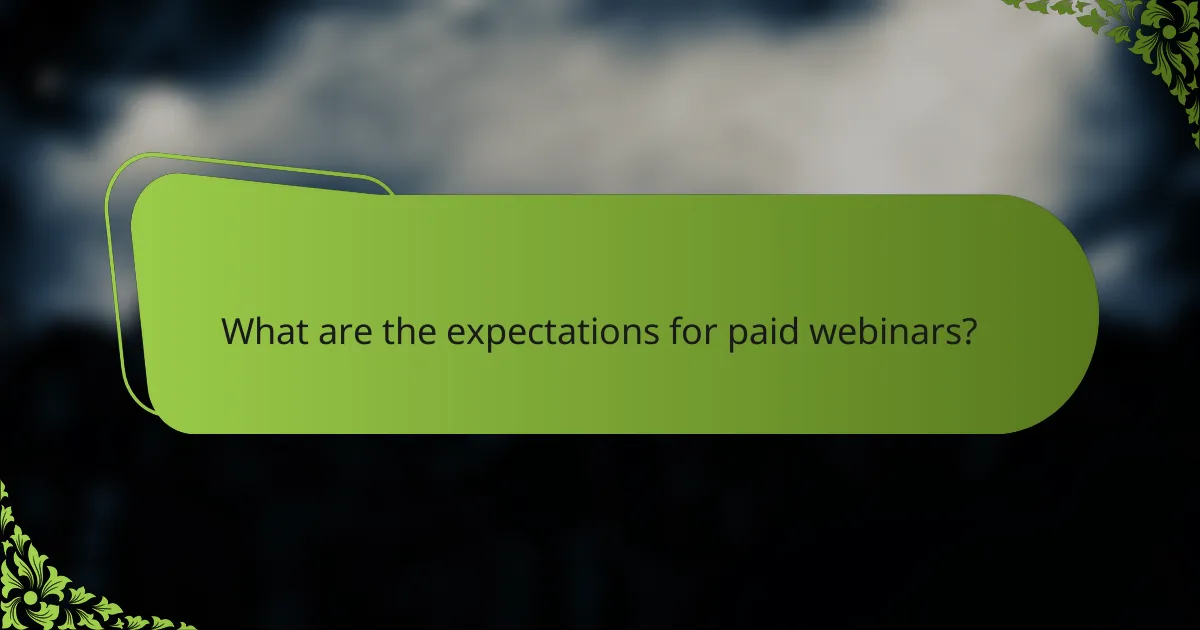
What are the expectations for paid webinars?
Paid webinars typically promise a higher level of professionalism, engagement, and valuable content compared to free options. Participants can expect well-structured sessions that often include exclusive resources and expert insights.
Higher engagement and interaction
Paid webinars often foster greater engagement and interaction among attendees. With a financial commitment, participants are generally more invested in the content, leading to active participation through Q&A sessions and discussions.
To enhance interaction, hosts may utilize tools like polls and breakout rooms, encouraging attendees to share their thoughts and experiences. This level of engagement can significantly enrich the learning experience.
In-depth content and resources
Paid webinars typically offer more in-depth content and exclusive resources. Unlike free webinars, which may skim the surface, paid sessions often dive deeper into topics, providing comprehensive insights and actionable strategies.
Participants might receive supplementary materials such as e-books, templates, or access to recorded sessions, adding value to their investment. This in-depth approach can be particularly beneficial for professionals seeking to enhance their skills or knowledge.
Targeted audience participation
Paid webinars usually attract a more targeted audience, leading to more relevant discussions and networking opportunities. Since attendees have a specific interest in the topic and have paid to participate, the interactions tend to be more focused and beneficial.
This targeted participation can help create a community of like-minded individuals, facilitating connections that may lead to future collaborations or business opportunities.
Enhanced perceived value
The perceived value of paid webinars is generally higher due to the investment required. Participants often associate a cost with quality, expecting a more polished presentation and expert speakers.
This enhanced perception can lead to increased satisfaction and a greater likelihood of attendees recommending the webinar to others. It’s essential for hosts to deliver on these expectations to maintain credibility and encourage future participation.

What are the benefits of free webinars?
Free webinars offer several advantages, including no financial barriers for participants and the ability to reach a wider audience. They serve as effective tools for education, marketing, and community engagement without requiring a monetary investment from attendees.
No financial commitment
The primary benefit of free webinars is that they require no financial commitment from participants. This encourages more people to sign up and attend, as they can engage without worrying about costs. Businesses can leverage this to attract larger audiences and generate leads.
However, it’s essential to balance the no-cost aspect with the quality of content provided. If the material is perceived as low-value, even a free offering may not attract attendees in the long run.
Accessibility for diverse audiences
Free webinars enhance accessibility, allowing individuals from various backgrounds to participate. This inclusivity can lead to a richer exchange of ideas and perspectives, benefiting both the host and the attendees. For example, professionals from different industries can share insights that may not be available in a paid setting.
To maximize accessibility, consider scheduling webinars at different times or offering recordings for those who cannot attend live. This approach ensures that a broader audience can benefit from the content, regardless of their location or time constraints.
Opportunity for brand exposure
Hosting free webinars provides an excellent opportunity for brand exposure. Organizations can showcase their expertise and build credibility within their industry, attracting potential customers and partners. By promoting the webinar through various channels, businesses can significantly increase their visibility.
To capitalize on this exposure, ensure that the webinar aligns with your brand’s values and messaging. Engaging content and effective promotion can lead to increased interest in your products or services, ultimately driving growth.
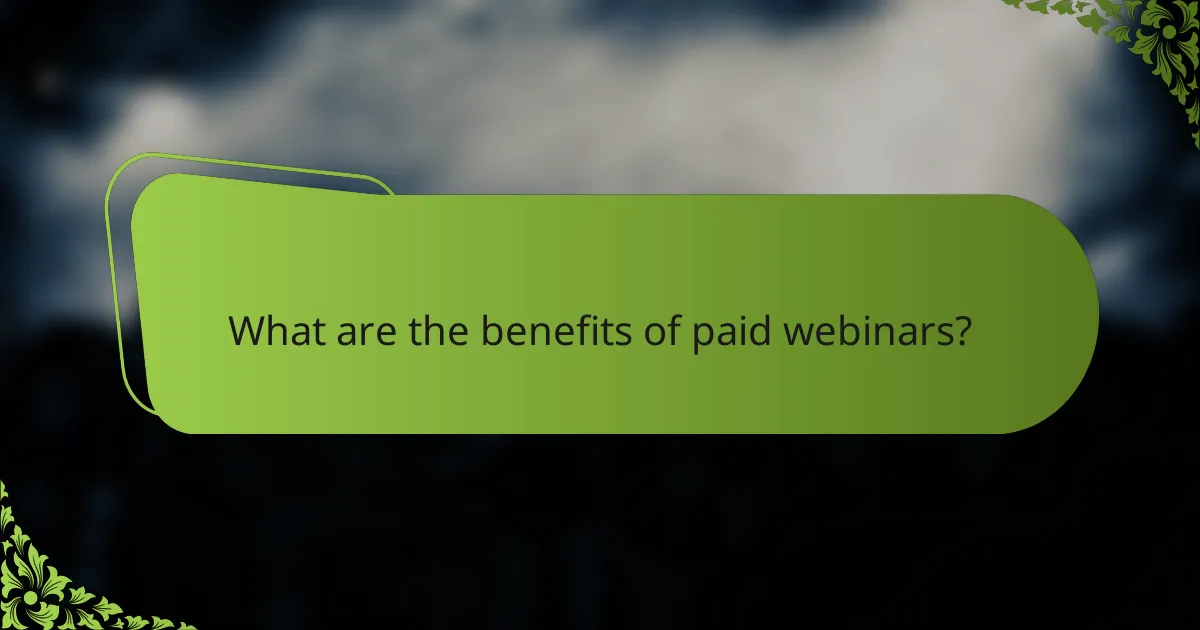
What are the benefits of paid webinars?
Paid webinars offer several advantages over free options, including enhanced content quality, better engagement, and potential revenue generation. Participants often receive more value from paid sessions, making them a worthwhile investment for both hosts and attendees.
Revenue generation potential
Paid webinars can serve as a significant source of income for businesses and individuals. By charging participants, hosts can cover costs and potentially generate profit, especially if they attract a large audience. Pricing can vary widely, typically ranging from a few dollars to several hundred, depending on the content and expertise offered.
To maximize revenue, consider offering tiered pricing or early-bird discounts. This strategy can incentivize early sign-ups and increase overall attendance, enhancing profitability.
Access to exclusive content
Participants in paid webinars often gain access to exclusive content that is not available in free sessions. This can include in-depth training, specialized knowledge, or insights from industry experts. Such content is usually curated to provide actionable takeaways that attendees can implement immediately.
Offering unique materials, such as downloadable resources or follow-up Q&A sessions, can further enhance the value proposition of a paid webinar. This exclusivity can justify the cost and encourage more participants to register.
Professional networking opportunities
Paid webinars frequently attract a more serious audience, providing excellent networking opportunities for attendees. Participants can connect with like-minded professionals, industry leaders, and potential collaborators, fostering valuable relationships that can lead to future business opportunities.
To facilitate networking, consider incorporating breakout sessions or dedicated networking time during the webinar. This approach encourages interaction and helps attendees build connections that extend beyond the event itself.

What are the limitations of free webinars?
Free webinars often come with several limitations that can impact the overall experience and effectiveness. These include restricted resources, less engagement, and potential quality issues compared to paid options.
Limited resources and support
Free webinars typically have fewer resources available for both the host and attendees. This can mean limited access to advanced technology, lower-quality production values, and minimal promotional support. As a result, the overall experience may not be as polished or engaging.
Additionally, support for participants can be lacking. Free webinars may not offer dedicated customer service or technical assistance, leaving attendees to troubleshoot issues on their own. This can lead to frustration and disengagement during the session.
Hosts should consider these limitations when planning a free webinar. It’s essential to set realistic expectations and be prepared to manage potential challenges, such as technical difficulties or lower audience interaction. Engaging with participants through follow-up emails or additional resources can help mitigate some of these issues.



